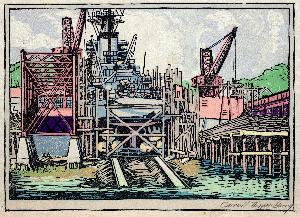Carroll Thayer Berry
Carroll Thayer Berry
Place: New Gloucester
Born: 1886
Death: 1978
Biography:
Carroll Thayer Berry (September 4, 1886 – January 20, 1978) was an American artist who grew up in Maine, and whose work is often said to be emblematic of New England, especially the seacoast. In addition, he was one of the first U.S. artists to be assigned to camouflage in World War I. Berry was born and raised in New Gloucester, Maine, the son of a dairy farmer. Not wanting to follow in his father’s footsteps, he was determined to become a marine engineer. He enrolled at the University of Michigan and became an engineer. However, he dreamed like an artist and began taking art classes at night in Boston. In 1910, Berry travelled to Panama to participate in the construction of the Panama Canal. He contracted malaria and was sent home where he returned to his art studies, this time at the Pennsylvania Academy of Fine Arts. Berry returned to Panama as an inspector of construction and after his artistic skills were noticed by government officials, Berry was commissioned to paint a series of large murals celebrating the opening of the Panama Canal in 1914. In 1915, Berry returned to the US, and moved to New York City where he became a commercial artist. Soon after, he married, and he and his wife raised a son. In 1917, Berry enlisted during World War I and was assigned to camouflage.




